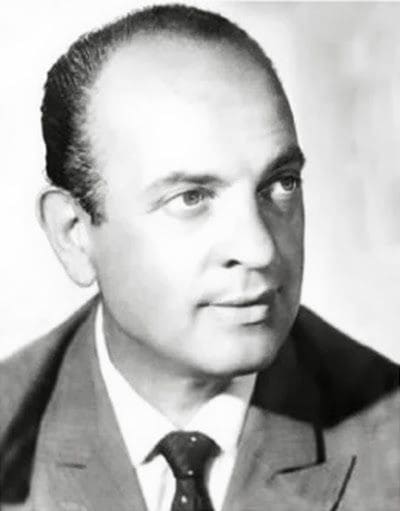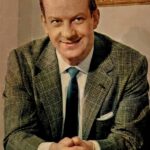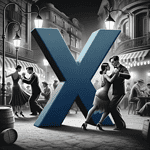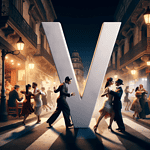Miguel Caló was the Director of one of the most significant orchestras of the classic era of Tango. He was renowned for his mastery in orchestrating a sound that was both unique and influential. Caló left an indelible mark as a director, composer, and bandoneonist. Let’s journey through the life and rhythm of this tango maestro
Early Musical career
Miguel Caló. Born on October 28, 1907, in the Balvanera neighborhood of Buenos Aires. On May 24, 1972, the tango world bid farewell to Miguel Caló.
Miguel Caló’s journey into the heart of tango began in 1926 when he joined the bandoneon section of Osvaldo Fresedo’s orchestra. His musical prowess took him on a tour through Spain with Cátulo Castillo’s ensemble, shaping the early chapters of his career. In 1929, Caló formed his first orchestra, setting the stage for a remarkable musical odyssey.
Returning to Buenos Aires, Caló crafted a new orchestra, featuring prominent musicians like Domingo Cuestas and Carlos Dante. In 1932, he made his first recordings, capturing the essence of tango with classics like “Milonga porteña” and “Amarguras.” By 1934, Caló had honed a distinct style influenced by Fresedo and reminiscent of Di Sarli, solidifying his position as a tango innovator.
The Golden Era and aftermath
The late 1930s marked a turning point for Miguel Caló as he collaborated with arranger Argentino Galván and welcomed iconic singer Raúl Berón in 1939. Despite initial skepticism from radio executives, a 1942 recording featuring Berón proved to be a smash hit, cementing his place in the orchestra. The period from 1943 to 1945 witnessed a peak in Caló’s career, with memorable recordings and a dynamic vocal duo with Raúl Iriarte.
The post-war era saw changes in Caló’s orchestra lineup, with notable departures and arrivals. Despite these shifts, Caló’s knack for assembling talented musicians persisted. In 1961, he formed the “Miguel Caló y su Orquesta de las estrellas,” achieving success on radio and in the studio.
Caló’s Musical Style: Peace between violins and bandoneons
His orchestra, aptly named ‘Orquesta de las Estrellas’ (The Orchestra of the Stars), was a testament to his musical genius and ability to bring together some of the most talented musicians of the era.
The ‘Orquesta de las Estrellas’ earned its name for comprising some of the most talented musicians of the time. Key members included bandoneónists like Domingo Federico and violinists such as Enrique Mario Francini. Their collective skill contributed significantly to the orchestra’s unique sound.
The sound of Caló’s orchestra was quite distinct. He struck a fine balance between the bandoneóns and violins, creating a harmonious blend that was both melodious and rhythmically engaging.
While other orchestras were leaning towards one or the other instrument, Caló sought the fusion and balance. The bandoneóns in his orchestra didn’t overpower; instead, they wove seamlessly with the strings, producing a sound that was rich yet refined.
Caló’s style differed markedly from that of Carlos di Sarli and Juan d’Arienzo, two other giants of Tango music. While di Sarli’s orchestra was known for its romantic and lyrical style, Caló’s approach was more nuanced, focusing on a sophisticated interplay of instruments.
On the other hand, d’Arienzo’s style was markedly more rhythmic and energetic, often considered the epitome of the traditional Tango sound. Caló found a middle ground, combining the lyrical qualities of di Sarli with some of the rhythmic drives of d’Arienzo, but always with his unique touch.
Calo´s singers
Calo´s music will always be remembered for the unique and tasteful vocal interpretations. Some of the most successful singers of his ensemble were:
- Raúl Berón: Known for his smooth, velvety voice, Berón’s singing was a perfect match for Caló’s sophisticated arrangements. His recordings like ‘Al compás del corazón’ and ‘Trasnochando’ are timeless.
- Alberto Podestá: Podestá’s style was marked by a clear, expressive delivery. He made hits like ‘Percal’ and ‘Nada’ famous, which remain favorites among Tango enthusiasts.
- Roberto Arrieta: Arrieta’s singing had a distinct clarity and strength. Tracks like ‘Cuando tallan los recuerdos’ showcase his powerful vocal style.
- Jorge Ortiz: Ortiz brought a dramatic flair to his performances. His rendition of ‘Cien noches’ is a testament to his emotive singing style.
Legacy
Beyond his role as a director, Caló made significant contributions as a composer. His instrumental tangos, including “Milonga porteña” and “Garabito,” showcased his musical ingenuity. Collaborations with Osmar Maderna produced memorable tangos like “Jamás retornarás” and “Qué te importa que te llore,” immortalized by singer Raúl Berón.
Miguel Caló’s contribution to Tango music was profound. His ability to blend the bandoneóns, violins, and piano into a cohesive and captivating sound set his orchestra apart. The ‘Orquesta de las Estrellas’ was more than a name; it was a reflection of the extraordinary talent that Caló brought together, creating a legacy that resonates in the Tango world to this day.
Jose Gobello notes that Miguel Caló achieved a unique balance of dance, tango, and music within the “Guardia del Cuarenta” of tango. His legacy lives on in the dance halls, where tango enthusiasts continue to move to the timeless rhythms he crafted.
10 Most Important Tango Songs by Miguel Caló
- Song Name: Milonga porteña
- Recording Year: 1932
- Orchestra: Miguel Caló
- Singer: Román Prince
- Details: A classic milonga capturing the essence of Caló’s early style, cherished for its lively rhythm.
- Song Name: Al compás del corazón
- Recording Year: 1942
- Orchestra: Miguel Caló
- Singer: Raúl Berón
- Details: A pivotal recording that solidified Berón’s place in the orchestra, resonating with dancers for its emotional depth.
- Song Name: Mañana iré temprano
- Recording Year: 1943
- Orchestra: Miguel Caló
- Details: A popular tango that showcases the brilliance of Caló’s orchestra, loved for its melodic richness.
- Song Name: Cada día te extraño más
- Recording Year: 1943
- Orchestra: Miguel Caló
- Details: A soulful composition with Raúl Iriarte as the vocalist, known for its heartfelt lyrics and captivating melody.
- Song Name: Marión
- Recording Year: 1945
- Orchestra: Miguel Caló
- Details: An iconic tango featuring the expressive vocals of Raúl Iriarte, leaving an enduring imprint on the tango repertoire.
- Song Name: Nada
- Recording Year: 1945
- Orchestra: Miguel Caló
- Details: A melancholic masterpiece, sung by Raúl Iriarte, that continues to resonate with tango aficionados for its emotional intensity.
- Song Name: Tabaco
- Recording Year: 1945
- Orchestra: Miguel Caló
- Details: A rhythmic and dynamic tango, highlighting the musical finesse of Caló’s orchestra, particularly the violin arrangements.
- Song Name: Trenzas
- Recording Year: 1945
- Orchestra: Miguel Caló
- Details: A captivating tango with intricate musical layers, featuring the skilled vocal interpretation of Raúl Iriarte.
- Song Name: Óyeme
- Recording Year: 1945
- Orchestra: Miguel Caló
- Details: The last tango of the era featuring Iriarte, “Óyeme” stands out for its poetic lyrics and memorable orchestration.
- Song Name: Jamás retornarás
- Recording Year: 1963
- Orchestra: Miguel Caló y su orquesta de las estrellas
- Details: A later recording showcasing the continued brilliance of Caló, this tango highlights the evolution of his style with a fresh ensemble.
These songs, spanning different periods of Miguel Caló’s career, remain timeless gems in the world of Argentine Tango, continuing to inspire dancers and musicians alike.
Frequently Asked Questions about Miguel Caló
Who were the key singers in Caló’s orchestra during its golden era (1937-1945)?
The golden era of Caló’s orchestra featured notable singers such as Raúl Berón and Raúl Iriarte, contributing to the orchestra’s significant success.
What was the significance of the recording with Raúl Berón in 1942?
The 1942 recording featuring Raúl Berón with the tango “Al compás del corazón” and the vals “El vals soñador” was a major success, solidifying Berón’s position in the orchestra.
Who were some of the influential musicians that emerged from Miguel Caló’s orchestra?
Several musicians who played in Caló’s orchestra went on to form their own ensembles, including Domingo Federico, Armando Pontier, Carlos Lazzari, and Eduardo Rovira.
What is Miguel Caló’s contribution as a composer?
Miguel Caló not only directed orchestras but also made significant contributions as a composer. His compositions, both instrumental and vocal, have become integral parts of the tango repertoire.
Notable Sources
- García Blaya, Ricardo. Miguel Caló
- Gobello, José. Mujeres y hombres que hicieron el tango. Buenos Aires, 2002.
- Tango.info






